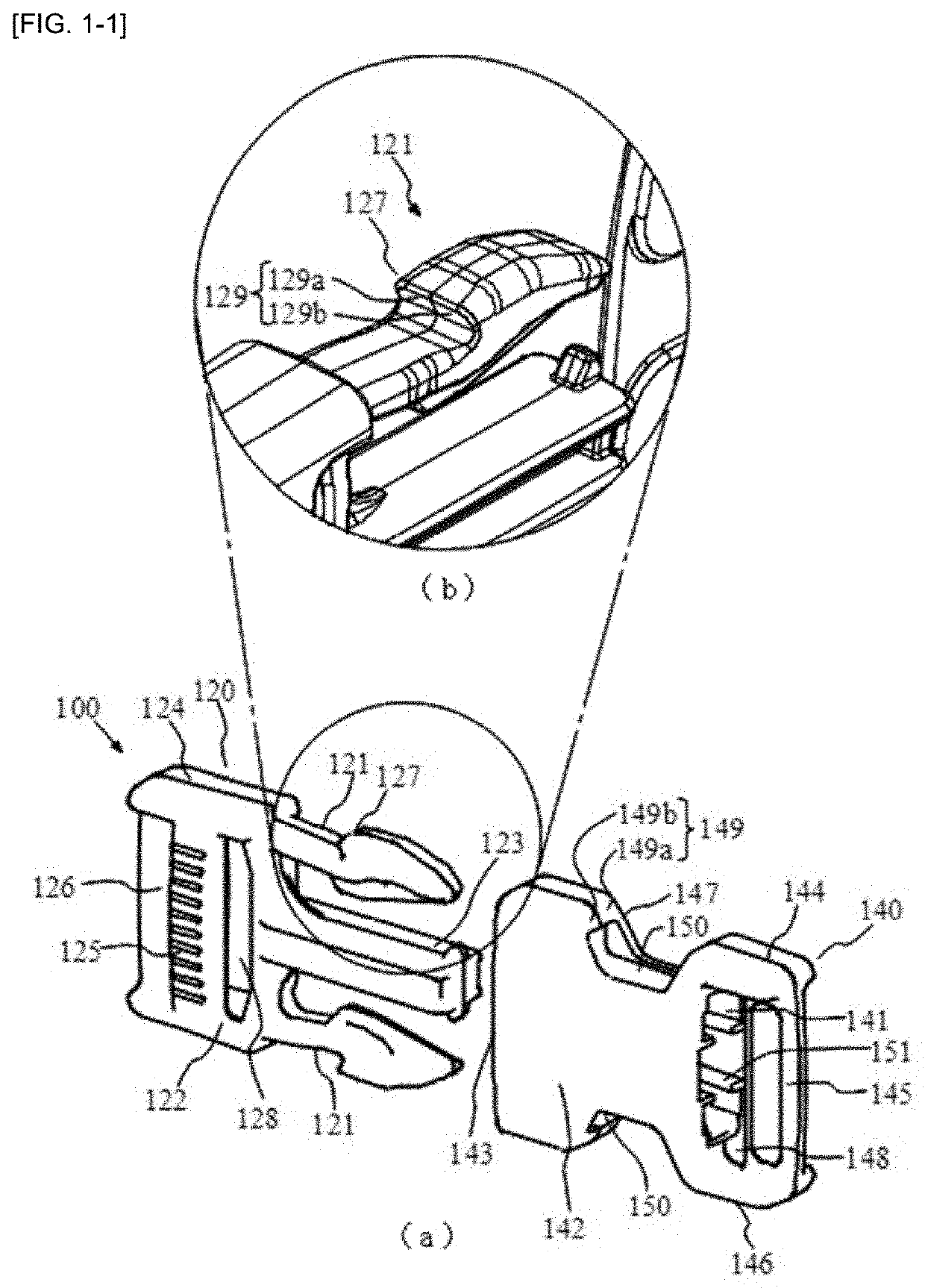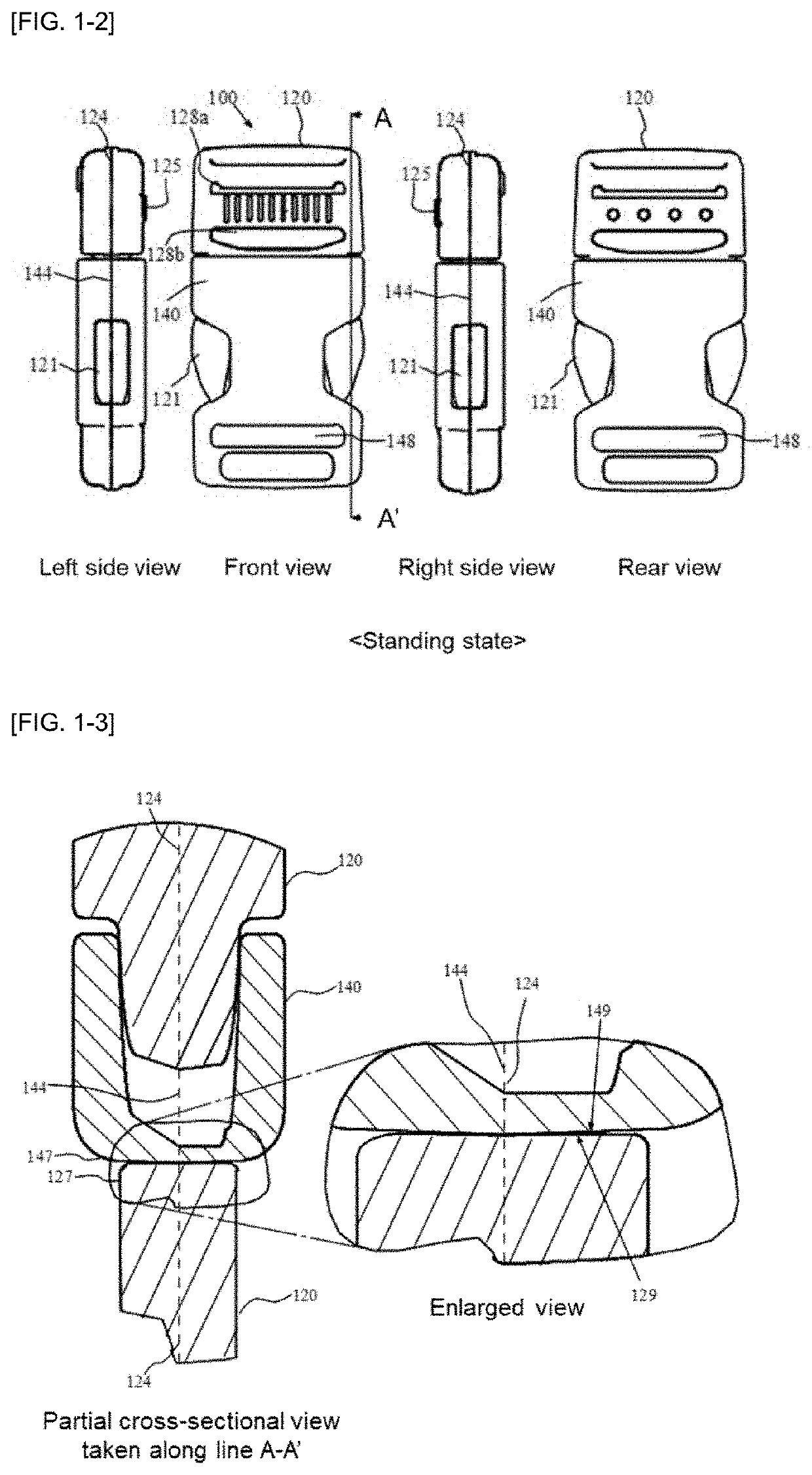Side-release buckle
a side-release buckle and buckle technology, which is applied in the direction of bracelets, wristwatch straps, buckles, etc., can solve the problems of low effect of preventing the other portion of the leg portion from being broken, forming cracks in the leg portion, and not being useful in preventing the other portion of the leg portion,
- Summary
- Abstract
- Description
- Claims
- Application Information
AI Technical Summary
Benefits of technology
Problems solved by technology
Method used
Image
Examples
first embodiment
[0052]FIG. 1-1(a) is a perspective view of the side-release buckle (100) according to the first embodiment of the present invention when the plug (120) and the socket (140) are in a separated state. FIG. 1-1(b) is a partial enlarged view of the vicinity of the area surrounded by the circle in (a). FIG. 1-2 is a front view, a rear view, a right side view, and a left side view of the side-release buckle (100) wherein the plug (120) and the socket (140) are in a locked state and both parting lines are in a parallel state. FIG. 1-3 is an enlarged cross-sectional view of the vicinity of the engaging portion (127) of the plug (120) and the portion to be engaged (147) of the socket (140), taken along the line A-A′ of FIG. 1-2. FIG. 1-4 is a front view, a rear view, a right side view, and a left side view of the side-release buckle (100), wherein the plug (120) and the socket (140) are in a locked state and the plug (120) is in a bent forward state. FIG. 1-5 is an enlarged cross-sectional v...
second embodiment
[0071]FIG. 2-1 is a front view, a rear view, a right side view, and a left side view of the side-release buckle (200) according to a second embodiment of the present invention wherein the plug (120) and the socket (140) are in a locked state. FIG. 2-2 is an enlarged cross-sectional view of the vicinity of the engaging portion (127) of the plug (120) and the portion to be engaged (147) of the socket (140), taken along the line B-B′ of the side-release buckle (200) in FIG. 2-1. Further, FIG. 2-3 is a schematic cross-sectional view of the engaging surface (129) and the surface to be engaged (149) of the side-release buckle (200), in which the plug (120) and the socket (140) are locked, observed from a direction that is an in-plane direction of the first mold mating surface defined by the first parting line (124) of the plug (120), and is also a direction perpendicular to an insertion direction. In FIG. 2-1, FIG. 2-2, and FIG. 2-3, when the same reference numerals as FIG. 1-1, FIG. 1-2,...
PUM
 Login to View More
Login to View More Abstract
Description
Claims
Application Information
 Login to View More
Login to View More - R&D
- Intellectual Property
- Life Sciences
- Materials
- Tech Scout
- Unparalleled Data Quality
- Higher Quality Content
- 60% Fewer Hallucinations
Browse by: Latest US Patents, China's latest patents, Technical Efficacy Thesaurus, Application Domain, Technology Topic, Popular Technical Reports.
© 2025 PatSnap. All rights reserved.Legal|Privacy policy|Modern Slavery Act Transparency Statement|Sitemap|About US| Contact US: help@patsnap.com



